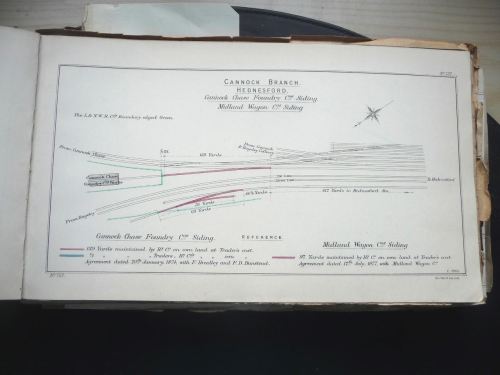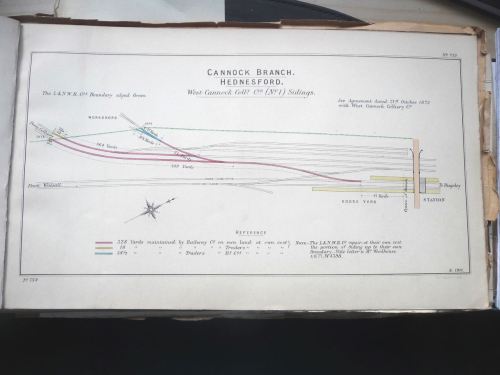ChasewaterRailwayMuseum News
A couple of old photographs
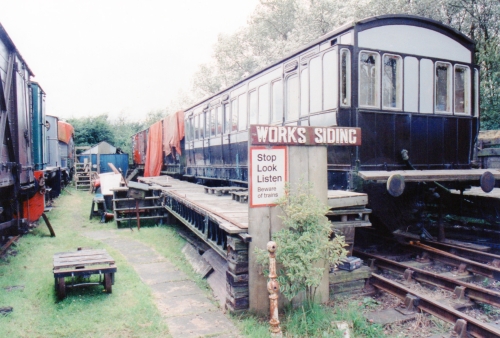 The first one is a photograph of the ‘Works Siding’ notice in situ in the old Brownhills West yard. Also in the photo is the Manchester, Sheffield & Lincoln carriage, looking quite smart considering it was kept outside in those days. Now the notice is standing on the hand-pump truck outside the museum.
The first one is a photograph of the ‘Works Siding’ notice in situ in the old Brownhills West yard. Also in the photo is the Manchester, Sheffield & Lincoln carriage, looking quite smart considering it was kept outside in those days. Now the notice is standing on the hand-pump truck outside the museum.
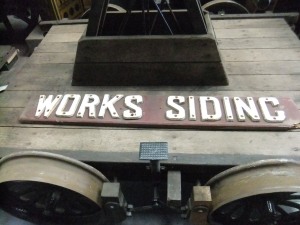
The other photograph is of Much Wenlock station.  This one comes from a selection of paperwork and photographs from David Ives – a long-time Board member. On the reverse of the photo are two Newspaper articles in small, very neat hand-writing, which I have reproduced here.
This one comes from a selection of paperwork and photographs from David Ives – a long-time Board member. On the reverse of the photo are two Newspaper articles in small, very neat hand-writing, which I have reproduced here.
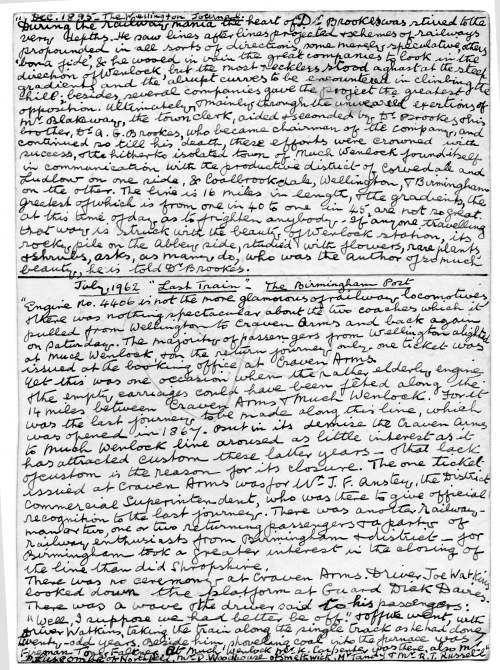
December 1895 – The Wellington Journal
During the railway mania the heart of Dr. Brookes was stirred to the very depths. He saw lines after lines projected and schemes of railways propounded in all sorts of directions, some merely speculative, others ‘bona fide’, and he wooed in vain the great companies to look in the direction of Wenlock, but the most reckless stood aghast at the steep gradients and the abrupt curves to be encountered in climbing the hill; besides, several companies gave the project the greatest opposition. Ultimately, mainly through the unwearied exertions of Mr. Blakaway, the Town Clerk, aided and seconded by Dr. Brookes and his brother, Dr. Q.G.Brookes, who became Chairman of the Company, and continued so till his death, these efforts were crowned with success, and the hitherto isolated town of Much Wenlock found itself in communication with the productive district of Corvedale and Ludlow on one side, and Coalbrookdale, Wellington and Birmingham on the other. The line is 16 miles in length, the gradients, the greatest of which is from 1 in 40 to 1 in 45, are not so great at this time of day as to frighten anybody. If anyone travelling that way is struck with the beauty of Wenlock station, its rocky pile on the Abbey side, studied with flowers, rare plants and shrubs, asks, as many do, who was the author of so much beauty, he is told – Dr. Brookes.
July 1962 ‘The Last Train’ The Birmingham Post
Engine No. 4406 is not the most glamorous of railway locomotives and there was nothing spectacular about the two coaches which it pulled from Wellington to Craven Arms and back again on Saturdays. The majority of passengers from Wellington alighted at Much Wenlock, and on the return journey only one ticket was issued at the booking office at Craven Arms.
Yet this was one occasion when the rather elderly engine and the empty carriages could have been fêted along the 14 miles between Craven Arms and Much Wenlock, for it was the last journey to be made along this line, which was opened in 1867. But in its demise the Craven Arms to Much Wenlock line aroused as little interest as it had attracted custom these latter years – and that lack of custom is the reason for its closure. The one ticket issued at Craven Arms was for Mr. J.F.Anstey, the District Commercial Superintendent, who was there to give official recognition to the last journey. There was another railwayman or two, one or two returning passengers and a party of railway enthusiasts from Birmingham and District – for Birmingham took a greater interest in the closing of the line than did Shropshire.
There was no ceremony at Craven Arms. Driver Joe Watkins looked down the platform at Guard Dick Davies. There was a wave and the driver said to his passengers: ‘Well, I suppose we had better be off.’ And off we went, with Driver Watkins taking the train along the single track as he had done for twenty-odd years. Beside him, shovelling coal into the furnace was Fireman Tony Falkner. At Much Wenlock Mr. K.Carpenter was there, also Mr. D.Luscombe of Northfield, Mr. D.Woodhouse of Smethwick, Mr. Tandy and Mr. R.T.Russell
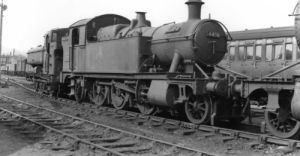
 railuk.info
railuk.info
 The Chasewater Railway Museum Sunday Staff – 2010
The Chasewater Railway Museum Sunday Staff – 2010











